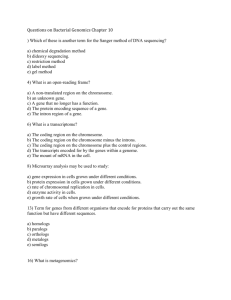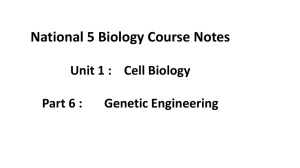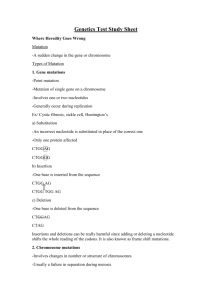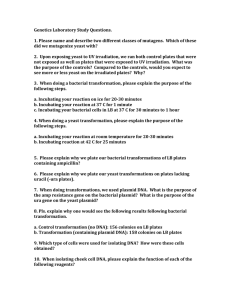DNA Recombination - Deer Creek Schools
advertisement
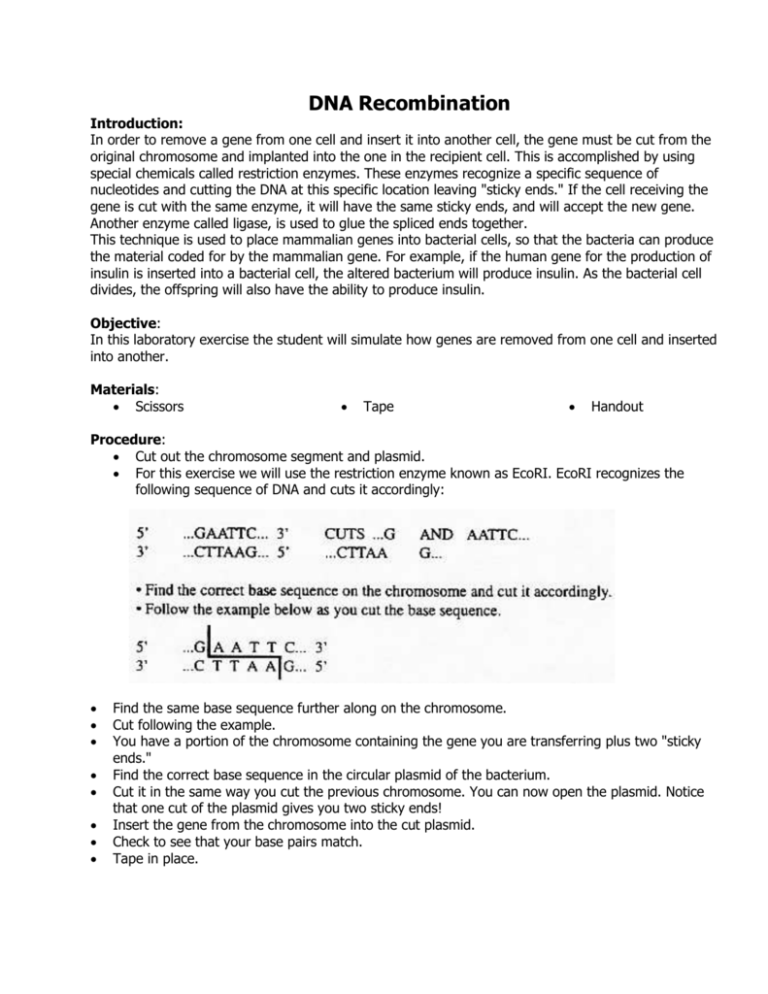
DNA Recombination Introduction: In order to remove a gene from one cell and insert it into another cell, the gene must be cut from the original chromosome and implanted into the one in the recipient cell. This is accomplished by using special chemicals called restriction enzymes. These enzymes recognize a specific sequence of nucleotides and cutting the DNA at this specific location leaving "sticky ends." If the cell receiving the gene is cut with the same enzyme, it will have the same sticky ends, and will accept the new gene. Another enzyme called ligase, is used to glue the spliced ends together. This technique is used to place mammalian genes into bacterial cells, so that the bacteria can produce the material coded for by the mammalian gene. For example, if the human gene for the production of insulin is inserted into a bacterial cell, the altered bacterium will produce insulin. As the bacterial cell divides, the offspring will also have the ability to produce insulin. Objective: In this laboratory exercise the student will simulate how genes are removed from one cell and inserted into another. Materials: Scissors Tape Handout Procedure: Cut out the chromosome segment and plasmid. For this exercise we will use the restriction enzyme known as EcoRI. EcoRI recognizes the following sequence of DNA and cuts it accordingly: Find the same base sequence further along on the chromosome. Cut following the example. You have a portion of the chromosome containing the gene you are transferring plus two "sticky ends." Find the correct base sequence in the circular plasmid of the bacterium. Cut it in the same way you cut the previous chromosome. You can now open the plasmid. Notice that one cut of the plasmid gives you two sticky ends! Insert the gene from the chromosome into the cut plasmid. Check to see that your base pairs match. Tape in place. Handout Name: __________________________________ Analysis Questions: 1. What is the purpose of putting a human gene in a bacterial cell? ________________________________________________________________________ ________________________________________________________________________ ________________________________________________________________________ ________________________________________________________________________ 2. What happens to the donor DNA when it gets into the bacterial cell? ________________________________________________________________________ ________________________________________________________________________ ________________________________________________________________________ ________________________________________________________________________ 3. What does the scissors represent in this process? ________________________________________________________________________ 4. What does the tape represent in this model? ___________________________________ 5. What would be the advantage of inserting the human gene into a human cell? ________________________________________________________________________ ________________________________________________________________________ ________________________________________________________________________ ________________________________________________________________________






